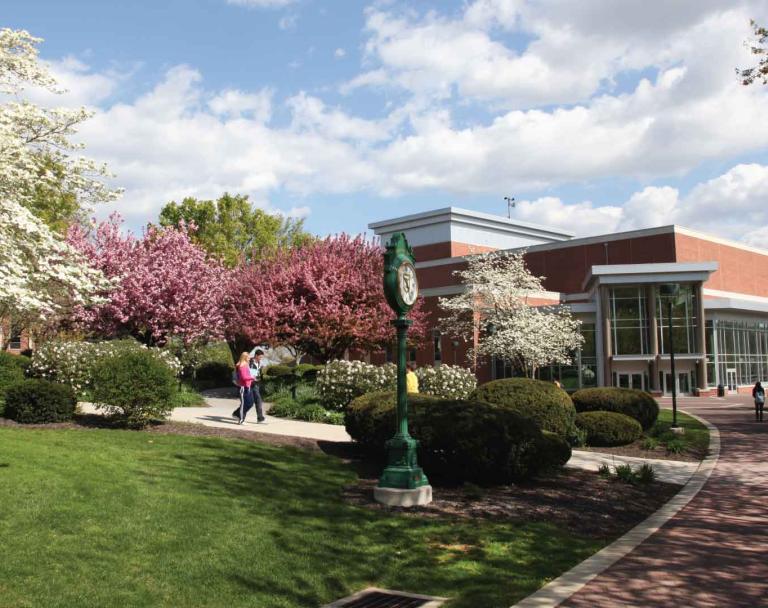York College of PA group, including president, travels to Morocco as part of summer course

- News and Events
- News Stories
York College of PA group, including president, travels to Morocco as part of summer course
June 10, 2022A group of York College students, their professor David Fyfe (Associate Professor of Geography and Director of Global Learning), two alumni, and President Pamela Gunter-Smith and her husband, JL, are currently traveling in Morocco as part of a summer class titled “Cultures and Environments Field Series.”
York College worked with Educational World Travel to plan the trip abroad. The itinerary for the 15-day excursion included arrival in and a brief tour of Casablanca, which included a visit to the Hassan II Mosque, the second largest mosque in the world, and the Museum of Moroccan Judaism. The 18-person group (six are visitors who chose to join the York College group) then visited Rabat, the nation’s capital, and Tangier.
Day five included exploration of the ruins of the ancient city of Volubilis, the most important and extensive remains of a Roman city in Morocco, and Moulay Idriss, the oldest town in Morocco, founded in 789. Additional stops included a tour of Fes, one of Morocco’s four Imperial Cities and the cultural heart of Morocco; Marrakech and its Djemma el-Fna square featuring a carnival of musicians, snake charmers, acrobats, story-tellers, witch doctors, dentists, clowns, and monkeys. The group also enjoyed a Moroccan cooking class at a farm near the city.
Students have been journaling throughout the trip. Jason Bratcher, a senior Intelligence Analysis major from Baldwin, Maryland, described day six:
We woke up early to get a start to our long day. The day began with a four-hour bus ride to Volubilis, a Roman ruins site. The guide showed some of the important landmarks in the city. The most notable is the Basilica, which was an ancient courthouse. The arches of the building still stand. The guide also described the differences between Ionic, Corinthian, and Doric columns. This site has examples of each. The group also learned about the aqueduct system of the city, and Romans were known for their engineering feats, especially with water works. The site also featured original mosaics, including one depicting the 12 tasks of Hercules. After the tour, the group boarded the bus to head to Meknes. We went to the Mausoleum of Moulay Ismail, which was very ornate. There was Arabic calligraphy throughout this building, and we learned about the prayer area as well as the traditions in a mausoleum as opposed to a traditional mosque. We next visited a museum dedicated to Moroccan music. This museum had many examples of traditional African instruments, and we saw videos of popular Moroccan artists. We also learned about Sufi music and culture.
News Stories View all News Stories
